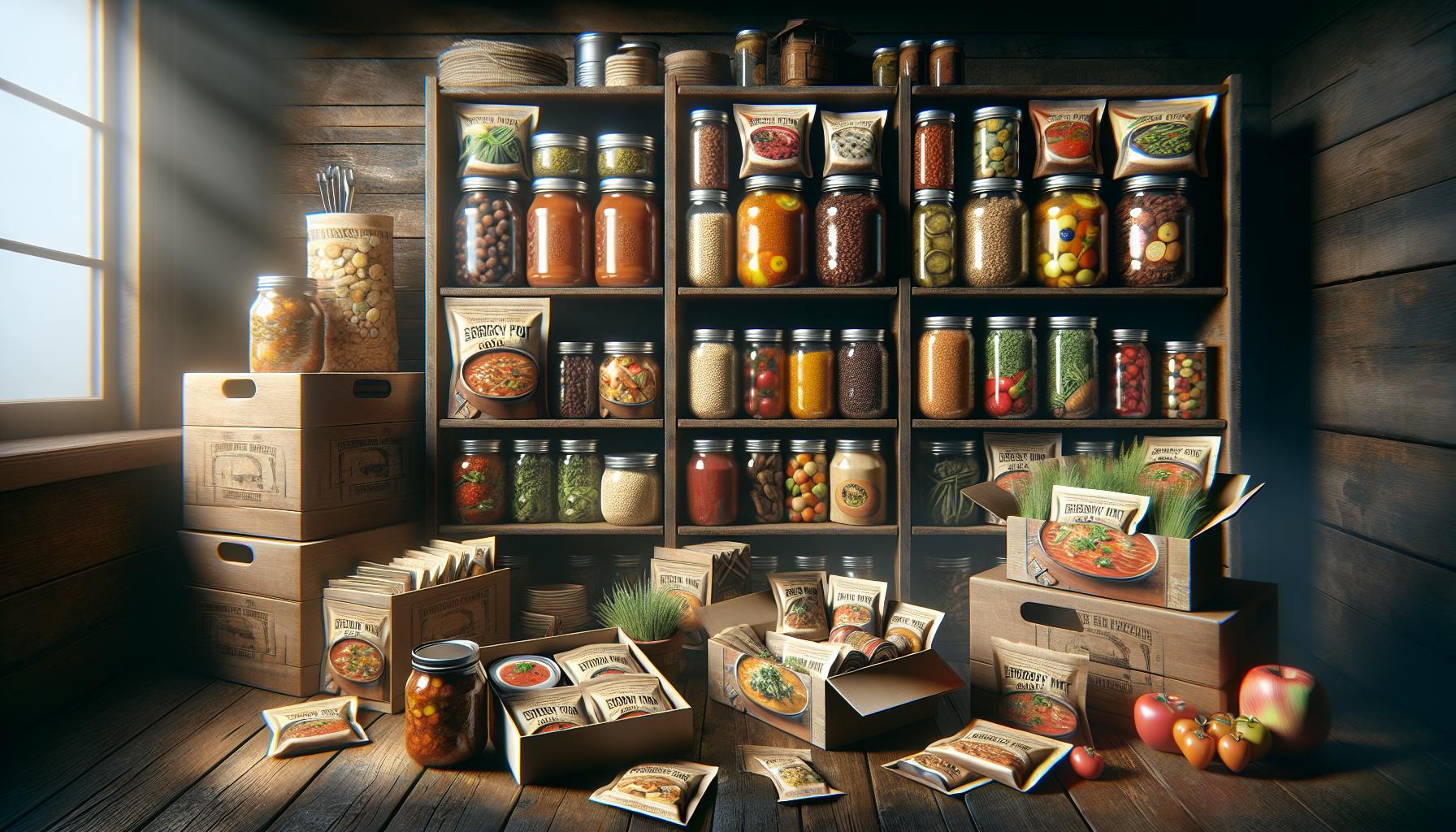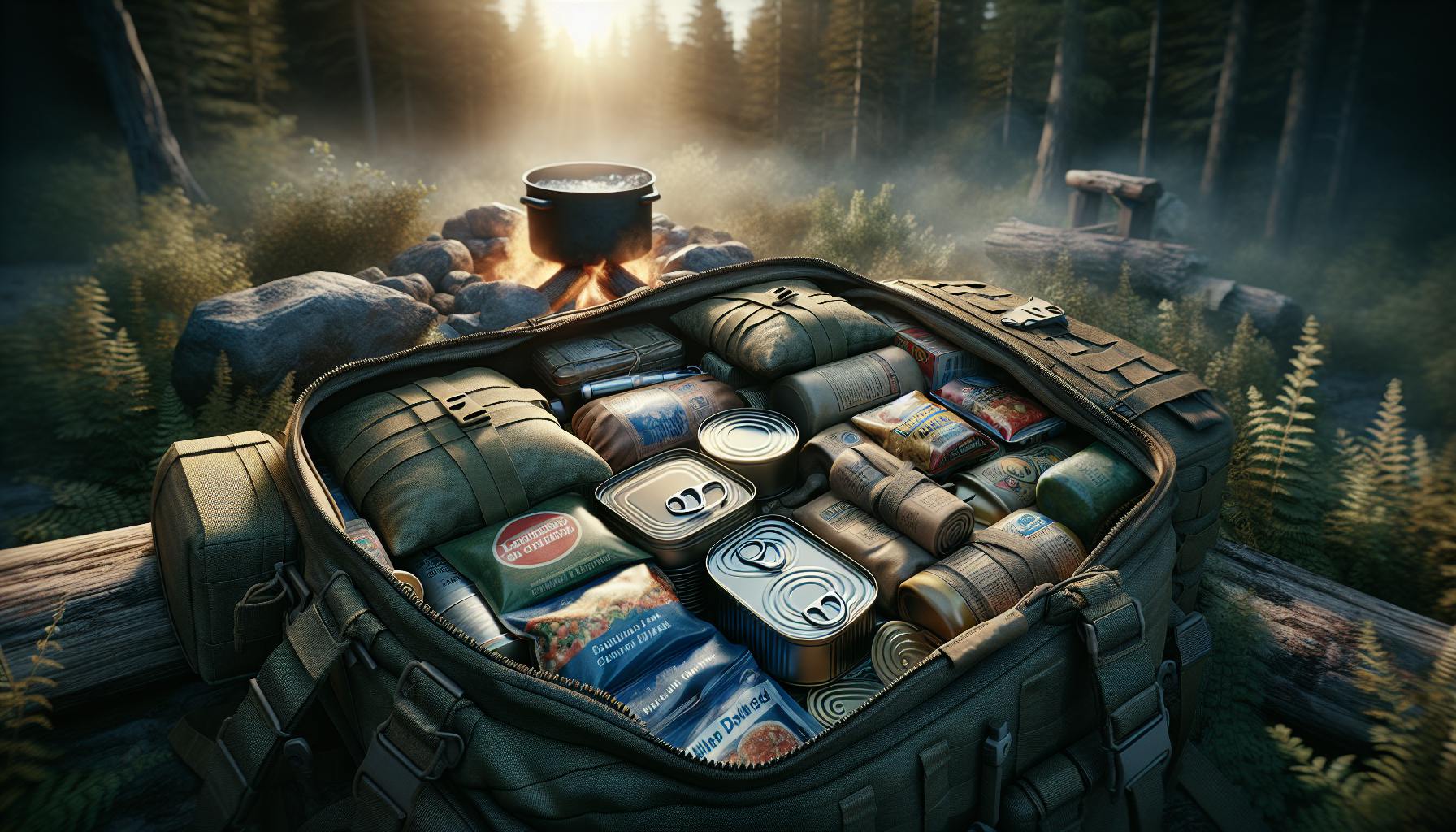Introduction to Hiding Spots in Your Home
Having effective hiding spots in your home can provide invaluable peace of mind and potentially even save lives in emergency situations. When disaster strikes, you'll be glad you took the time to identify and prepare concealed storage areas for your critical supplies and valuables.
Hiding spots allow you to securely stash items like emergency food, water, weapons, cash, and other essentials. This keeps your preparations private and the items protected. Hidden storage areas also help you quickly access these vital supplies when you need them most.
Whether it's a natural disaster, civil unrest, home invasion, or societal collapse - having go-to hiding spots already equipped will give you an advantage. Take the initiative now before an emergency occurs to scope out potential secret stashes throughout your property.
With some cleverness and foresight, you can utilize existing nooks and spaces for covert storage. Or, you can construct custom hidden compartments to safely conceal your most critical preparations.
Clever Hiding Spots Around the Home
When considering locations for hiding spots, think creatively and utilize any available void spaces:
-
Under floorboards or beneath loose carpets can provide discreet covered storage. Just cut access panels and secure with magnets or discreet latches. Consider installing a Biometric Fingerprint Safe ($149.99, www.safehouse.com) under floor panels for quick access.
-
Behind false electrical socket plates and light switch covers offers surprising capacity for stashing small items. Attach with magnetic backings for quick removal.
-
Hollow furniture like ottomans, benches, and seat cushions can be modified to incorporate hidden compartments. Install removable false bottoms secured with hidden magnetic locks.
-
Check for loose bricks or stones around fireplaces and walls that can be removed to access voids for stashing items. Use mortar sealant to reattach.
-
A fake book on a bookshelf, hollowed out with pages glued together, creates a deceptive hidden spot. Use an Exacto Knife to neatly cut pages.
-
Building a false wall or secret pivoting Murphy-style door blends right into the architecture while hiding access to a secret room or crawlspace.
-
The space beneath the bottom drawer of a dresser, cabinet, or desk can be used if the drawer is removable or on tracks. Install drawer slides for easy access.
-
Waterproof Pelican Cases (www.pelican.com) buried in the garden or yard make discreet caches, just note their locations. Bury at least 3 feet deep.
-
Hide waterproof tubes with items inside decorative rocks strategically placed around the property exterior. Use seam sealer to waterproof PVC tubing.
-
The tank of a toilet provides an often overlooked spot for stashing small containers. Use waterproofing gel to protect items.
-
Insulation in walls and ceilings can be displaced to carve out gaps for hiding emergency supplies. Replace with spray foam for sound dampening.
-
The hollow frame of box spring mattresses can be accessed by cutting a discreet opening to stash items inside the void.
Hiding Spots for Food Storage
Strategically concealed food reserves can provide life-saving sustenance when supplies run low:
-
Hollowed out furniture with false bottoms or sides conceal canned goods and MREs effectively. Use wood glue and finish nails to secure panels.
-
Dried rice, beans, pasta, and other long-term foods fit nicely inside fake books, boxes, or canned goods façades. Seal foods in Mylar bags with oxygen absorbers.
-
An old trunk or ottoman can be retrofitted with interior shelves as a secret pantry area. Screw in removable shelving.
-
For large quantities, stashing food storage buckets or containers in discreet areas throughout the home under existing décor works well.
-
Narrow voids between wall studs allow for neatly inserting food grade buckets and smaller containers. Soundproof wall cavities for discretion.
-
Attics, crawl spaces and basements are good for larger containers if kept dry and cool. Cover containers with insulating Reflectix.
-
Cabinets and drawers outfitted with false panels or bottom allow for concealed storage that slides out when needed. Install sliding tracks and child safety locks.
-
An outdoor freezer chest disguised as patio décor provides cold storage and can be locked for security. Anchor the freezer in concrete for stability.
-
For an in-ground cache, seal food grade buckets or containers and bury in the garden or yard in a waterproof PVC pipe. Mark locations on your property map.
-
On shelves inside the home, conceal 5-gallon buckets or large containers behind everyday boxes and containers using subtle or false labels. Use removable adhesive labels.
-
The cavity inside bathroom vanity doors provides discreet space for stashing canned goods and smaller food containers. Install child safety locks.
Concealing Water Storage
Maintaining personal water reserves ensures supply even if utilities are disrupted:
-
The space under beds can accommodate multiple cases of bottled water and larger collapsible containers. Cover with bed skirts to obscure.
-
Place water containers behind furniture, appliances, and along walls concealed by everyday items. Strap water barrels to walls for stability.
-
Plastic water barrels fit inside decorative planters and pots both indoors and outdoors to hide in plain sight. Use UV-resistant barrels for longevity.
-
Build a hidden water tank into existing wall spaces, attics, or basements for large volume storage. Use 2x4 framing and waterproof liner.
-
Creating trap doors under carpets and floors allows access to water stores stashed beneath. Install hinges and secure with combination padlocks.
-
Inside closets, hide 5-gallon jugs behind clothing on shelves or under boxes on the floor. Disguise with removable false wall panels.
-
False wall panels and shelves create nooks to conceal rows of water containers or gravity-fed barrels. Install with cabinet latches for quick removal.
-
Bathroom vanities and cabinets provide discreet space for gallon water jugs behind doors and drawers. Use shelf pins and adhesive hooks to stabilize.
-
Hollow out books, boxes, and other containers to stash individual water pouches and smaller bottles inside. Hot glue bindings for security.
-
For outdoor caching, bury waterproof barrels and tubes with water in the yard or garden area. Bury at least 3 feet deep and note locations.
-
The space beneath bathroom sinks provides room for stashing gallon jugs behind sliding cabinet doors. Install child safety locks.
Hiding Spots for Weapons and Self-Defense Items
Discreetly stashing defensive items allows rapid access when confronted with threats:
-
Use hidden compartments built into furniture like nightstands and coffee tables to conceal firearms. Install biometric fingerprint gun safes.
-
Secure rifles, handguns, and ammunition in easy-access biometric gun safes hidden within walls or floors. Connect to backup power sources.
-
For vehicles, install discreet pull-out cases or panels behind consoles and seats to hold defense items. Use neodymium magnets to secure.
-
Conceal pepper spray, knives, batons, and similar items in hollowed-out books, cases, and other inconspicuous containers. Camouflage containers to blend in.
-
Behind closet walls and cabinet panels, build hidden shelves or alcoves with quick-release latches to stash weapons. Soundproof for discretion.
-
The space under beds often allows installing discreet pull-out cases secured by concealed locks to hold firearms. Opt for biometric fingerprint access.
-
Create mock AC vents, ductwork, and plumbing pipes with removable sections to stash self-defense tools. Match textures and use magnetic closures.
-
For an exterior cache, securely bury waterproof Pelican Cases (www.pelican.com) with firearms and ammunition in the yard. Bury at least 3 feet deep.
-
Gun safes disguised as furniture, fixtures or architectural elements hide weapons in plain sight throughout the home. Anchor securely to framing.
-
Place grab-and-go bags containing critical self-defense items behind furniture, under beds, or in closets for quick access. Label bags distinctly.
-
Inside kitchen cabinets, build hidden compartments to stash pepper spray, batons, and smaller defense items behind false panels.
Hiding Emergency Supplies, Gear, and Valuables
Essentials for survival and critical documents deserve discreet secure storage:
-
Install DIY wall safes or locked stash boxes hidden behind vents to conceal cash, jewelry, and precious metals. Ventilate to prevent corrosion.
-
Tuck bug-out bags, get-home bags, medical kits and other essentials inside inconspicuous luggage or duffels stashed behind bedroom furniture. Use distinct bag colors for visibility.
-
Important documents and valuables can be sealed in waterproof cases and hidden under floorboards or behind baseboard trim. Secure latches with combination locks.
-
Stash radios, flashlights, tools and other gear inside chests, cabinets, and shelves with removable or false bottom panels. Label contents for organization.
-
The space between furniture and walls (like beds and dressers) is perfect for sliding in containers holding emergency supplies. Strap containers to studs securely.
-
Fake air conditioning vents and ducts made from wood or hardboard can conceal preparedness items in any room. Attach with magnets for quick removal.
-
Hollowed books and decorative boxes make ideal hiding spots for stashing cash, gold, silver, and cryptocurrency wallets. Use hot glue to reseal bindings.
-
Secret compartments built into furniture provide covert storage for first aid kits, medicines, and medical supplies. Install with hidden magnetic locks.
-
For protecting electronics from EMPs, store backup drives, radios, and spare gear in EMP-proof boxes hidden above ceiling tiles. Label boxes.
-
Wall art, mirrors and paintings disguised as hinged doors conceal wall safes and stashes built into the space behind. Install recessed cabinet hinges and latch.
-
Inside kitchen drawers, build hidden compartments to stash flashlights, multi tools, batteries and other essential gear. Soundproof for discretion.
Key Security Considerations for Hiding Spots
Proper precautions are necessary to keep hiding spots concealed, secured, and accessible:
-
Use hidden compartments equipped with secure combination locks, biometrics, or keyed locks to control access. Install backup keypad with alternate entry codes.
-
Avoid creating hiding spots in obvious locations that would raise suspicions if discovered. Opt for concealed, integrated designs that blend in.
-
Test hiding spots ahead of time for reliability, accessibility, conditions, and security. Conduct routine inspections every 6 months.
-
Have contingency backup plans ready in case any primary hiding areas become damaged, compromised, or unavailable. Share plans with trusted confidants.
-
Limit knowledge of hiding spot locations to only trusted individuals who may need emergency access. Provide access on a need-to-know basis only.
Techniques for Maximum Discretion
Hiding spots designed cleverly avoid drawing unwanted attention:
-
Discreet hinges, magnets, and latch designs blend seamlessly into furniture and architecture, concealing access points. Opt for concealed integrated cabinet hinges.
-
Opt for inconspicuous locations and designs that mimic existing construction and blend into the environment. Match textures and use soundproofing.
-
Use hidden or disguised entrances like false panels and secret doors to obscure access to secret spaces. Install hidden lever latches.
-
Soundproofing creates undetectable access when opening hiding spots, avoiding unwanted noise. Use mass loaded vinyl for noise blocking.
-
Match existing building materials like wood paneling, bricks, tiles, and wall textures when constructing hides. Distress finishes to blend old and new.
-
Hide infrared signatures that may be unique to concealed spaces to prevent discovery through thermal imaging. Use insulation and ventilation techniques.
-
Monitor access to hiding spots using silent tripwire alarms and sensors that alert you when compartments are opened. Connect sensors to home security system.
Protecting Against Discovery
Take measures to prevent the unwanted discovery of hiding spots:
-
Avoid obvious locations like under beds or behind pictures, as well as complex spots that would raise suspicions if found. Think discreetly.
-
Seal stored items that may produce odors that could allow hides to be smelled and detected. Use airtight storage containers and oxygen absorbers.
-
For diversion, use decoy stashes or safes in easily found locations to distract from real hiding spots if discovered. Hide low value items in decoys only.
-
Never share dual access to a hiding spot, even with trusted individuals, in case relationships change. Limit access to one trusted person only.
-
Have a credible reason prepared to explain any hiding spaces if unexpectedly discovered. Claim you inherited the features from a previous owner.
-
Discreetly monitor hiding spots using hidden cameras like a GoPro to detect tampering or unauthorized access attempts. Conceal camera well.
-
Test your own hiding spots by trying to break in from an outsider’s perspective, checking for flaws. Check for loose panels or latches.
Ensuring Proper Conditions
Maintaining ideal conditions prevents damage to hidden items:
-
Include silica gel packs in enclosed hiding spots to absorb moisture and control humidity. Replace gel packs annually.
-
Regulate temperatures using techniques like insulation, ventilation, and climate control to prevent damage to contents. Maintain 60-75°F.
-
Where possible, utilize waterproof and fireproof enclosures and materials to protect stashed items. Store paper docs in waterproof cases.
-
Avoid areas prone to water leaks, flooding, mold growth, or infestations when selecting hiding spot locations. Check for water stains or musty odors.
-
For long term food storage, use oxygen absorbers to extend shelf life in sealed containers. Replace absorbers annually.
-
Ensure hiding spots with emergency supplies are childproof and pet proof, if those are potential issues. Install high-mounted latches beyond reach.
-
Periodically inspect hiding spots to check for any degradation, water damage, tampering, or pest infestations over time. Inspect quarterly.
-
For stashed electronics and devices, consider wiring in electrical supply and ventilation as needed. Use surge protector and cooling fan.
-
In enclosed spaces, allow for air exchange and ventilation to prevent musty odors that could draw attention. Install air vents if possible.
Emergency Accessibility of Hiding Spots
When disasters strike, fast access to your hidden reserves can be crucial:
-
For critical gear like weapons and bug-out bags, prioritize quick access by using biometric fingerprint scanners or simple latch designs requiring minimal time and effort.
-
Practice speed-drills to test how long it takes to open hiding spots and retrieve emergency items under both ideal and stressful conditions. Time your performance.
-
Include contingency measures like backup power generation for keyless entry points in case electricity is disrupted. Use battery backup or portable generator.
-
Map out alternate access routes or options for physically breaching hiding spots if primary entrances are unexpectedly blocked or otherwise rendered unusable. Share plans with trusted contacts.
-
Share hiding spot locations and access instructions with trusted friends or family who may need to retrieve your emergency supplies in your absence. Appoint at least one backup contact.
Designing for Speed and Convenience
Optimizing hiding spots for rapid access improves emergency readiness:
-
Biometric fingerprint or iris scanners allow the fastest access when every second counts. Opt for battery powered scanners.
-
Interior lighting and organized layouts speed the retrieval process when you open hiding spots. Use battery powered touch lights.
-
Avoid overly complex hiding spot designs requiring moving heavy objects or following lengthy access procedures. Prioritize quick and easy access.
-
Stage emergency items most likely needed urgently closest to the openings for immediate grabbing. Categorize contents by priority.
-
Ensure adequate interior capacity and room to maneuver when opening hiding spots rapidly in an emergency panic. Minimum 2 feet width recommended.
-
Practice accessing your hiding spots under various conditions, including total darkness, to test and improve your ability to rapidly gain entry day or night.
Accounting for Disasters and Damage
Plan for continuing access even under challenging post-disaster circumstances:
-
Have established backup plans for alternate entry if power is lost or electronics like keypads are disabled. Store backup batteries onsite.
-
Consider potential debris blocking doorway access to hiding spots located in basements or interior spaces during tornadoes, floods or structural damage. Have needed tools nearby to clear pathways.
-
Stage needed tools nearby to break through blocked access points if hiding spot entrances become obstructed or jammed. Keep a pry bar, flashlight, and gloves staged nearby.
-
For flood-prone areas, elevate or reinforce hiding spots to remain above water levels, keeping contents dry and readily accessible. Build on cinder blocks or stilts.
-
In regions prone to fires and earthquakes, ensure pathways to access hiding spots are clear of objects likely to fall or burn, blocking access. Remove debris monthly.
Accessibility for Others If You're Away
Enabling others to access your hiding spots provides insurance if you're absent during an emergency:
-
Provide trusted family members or friends with duplicates of any needed keys, combinations, or passwords to access hiding spots if you're away. Store duplicates offsite with contacts.
-
Create a prioritized list detailing the most critical supplies for others to retrieve from your hiding spots in your absence during an emergency. Update annually.
-
Show all household members the locations of hiding spots and train them on proper access methods to prepare them for retrieving needed items independently. Conduct annual drills.
-
Place any small essentials like cash, jewelry, and medicines in portable lock boxes within hiding spots for easy transport by others if needed. Use distinctive colored cases.
-
Write clear access instructions explaining how to safely open and retrieve contents from hiding spots to share with trusted individuals. Laminate instructions for durability.
Hiding Spots for Pets
During disasters, secreting away pet food and supplies keeps animal companions provided for:
-
Under beds allows space for stashing pet food bags, kitty litter, and other bulky essentials. Cover openings with bed skirts.
-
Inside kitchen pantry cabinets, build hidden compartments to discretely store backup bags of pet food behind false panels. Label "Dog Food" etc.
-
Hollow out large books or decorative boxes to conceal smaller bags of pet food and treats. Hot glue bindings to reseal.
-
In furniture like couches or ottomans, install interior shelves to create secret stashes to


